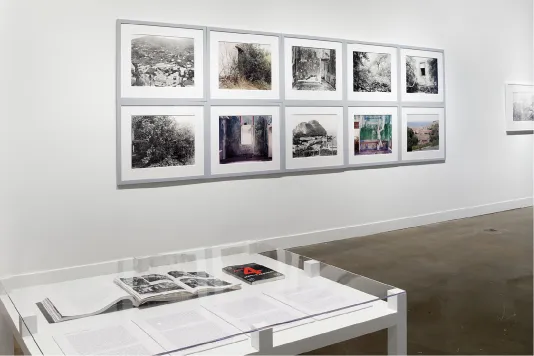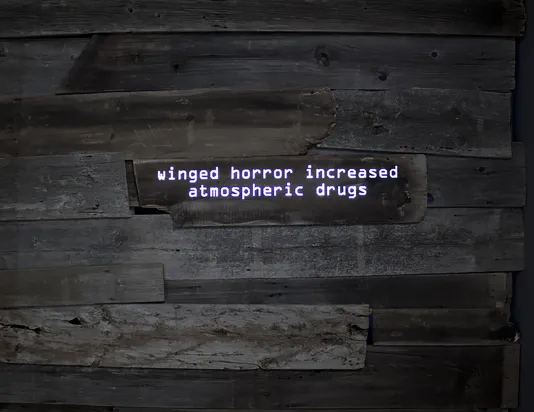Installation view, Joachim Koester: To navigate, in a genuine way, in the unknown…, MIT List Visual Arts Center, 2012.
Joachim Koester: To navigate, in a genuine way, in the unknown...

The unknown—in its scientific, metaphysical, and historical variety—has been central to the work of Joachim Koester (b. 1962, Copenhagen) for over two decades.
The first US museum survey of the artist’s work, Joachim Koester: To navigate, in a genuine way, in the unknown… reflects his interest in the limits of “what can and cannot be told,” from pre-modern ritual to the history of countercultures. Koester blurs document and narrative in this exploration of how knowledge, perception, and the body intertwine the rational with the obscure. By tracing forgotten journeys, occult phenomena, and esoteric forms of knowledge through photography, text, video, and film, Koester addresses the legacy of transgressive means for understanding the unseen and the unknown.
Koester’s interest in historical subjects is evident in the early series of photographs, Day for Night, Christiania (1996), which documents the community in Copenhagen founded by squatters in an abandoned military base in 1971. In The Kant Walks (2005), he attempts to reconstruct through images and text the daily walk of the philosopher Immanuel Kant through his native city of Königsberg. Other photographs depict attempts to bridge the world of matter and consciousness, through both magical and sensual means, as well as the ruins of further utopian experiments. Morning of the Magicians (2005) depicts the derelict villa in Sicily at the center of the occult mysticism and drug experimentation of Aleister Crowley and his followers, known as the Abbey of Thelema. The two-channel video installation One + One + One (2006) revisits the Abbey as a place of transgression of all taboos—religious, social, and personal—whose legacy extended into the counterculture of the 1960s and ’70s.
While engaging the histories of such experimentation, Koester’s recent work has looked to bodily practices and altered states of consciousness intended to access experience beyond the rational or empirical. In Tarantism (2007), a group of dancers enact an ecstatic “dancing cure” of convulsive movements that according to folklore, could ward off symptoms caused by the bite of the tarantula. In To navigate, in a genuine way, in the unknown necessitates an attitude of daring, but not one of recklessness (movements generated from the Magical Passes of Carlos Castaneda) (2009), an actor performs exercises described as atavistic gestures meant to enhance the ability to navigate “the dark sea of awareness.” For Variations of Incomplete Open Cubes (2011), Sol LeWitt’s eponymous variations are performed through a choreography of hand gestures. Other films in the exhibition reflect Koester’s interest in the exploration of both the “uncharted” out there and hidden within, from exchanges between the body and architecture, to the ghostly photographic remnants of 19th century exploration. The installation of these films follows the artist’s interventions in which windows or rooms were covered or partitioned with salvaged wood, first for the Malmö Konstmuseum, Sweden, in 1994, and later at the Overgaden Institute of Contemporary Art, Copenhagen, in 2008.
The exhibition is curated by João Ribas, Curator, MIT List Visual Arts Center.
Sponsors
Support for Joachim Koester: To navigate, in a genuine way, in the unknown…has been generously provided by the Danish Arts Council Committee for International Visual Art; the Royal Danish Embassy; Greene Naftali Gallery; the Consulate General of Denmark, New York; the Council for the Arts at MIT; the Massachusetts Cultural Council; and the Office of the Associate Provost at MIT, with special thanks to the MIT List Visual Arts Center Advisory Committee and the Friends of the List.









